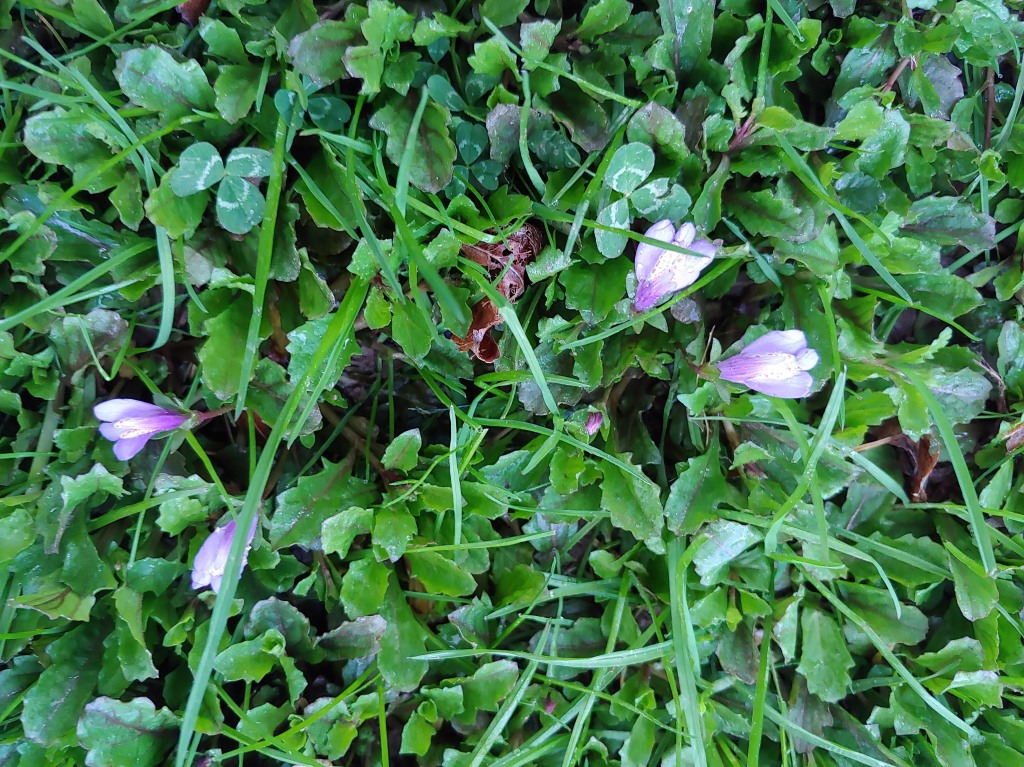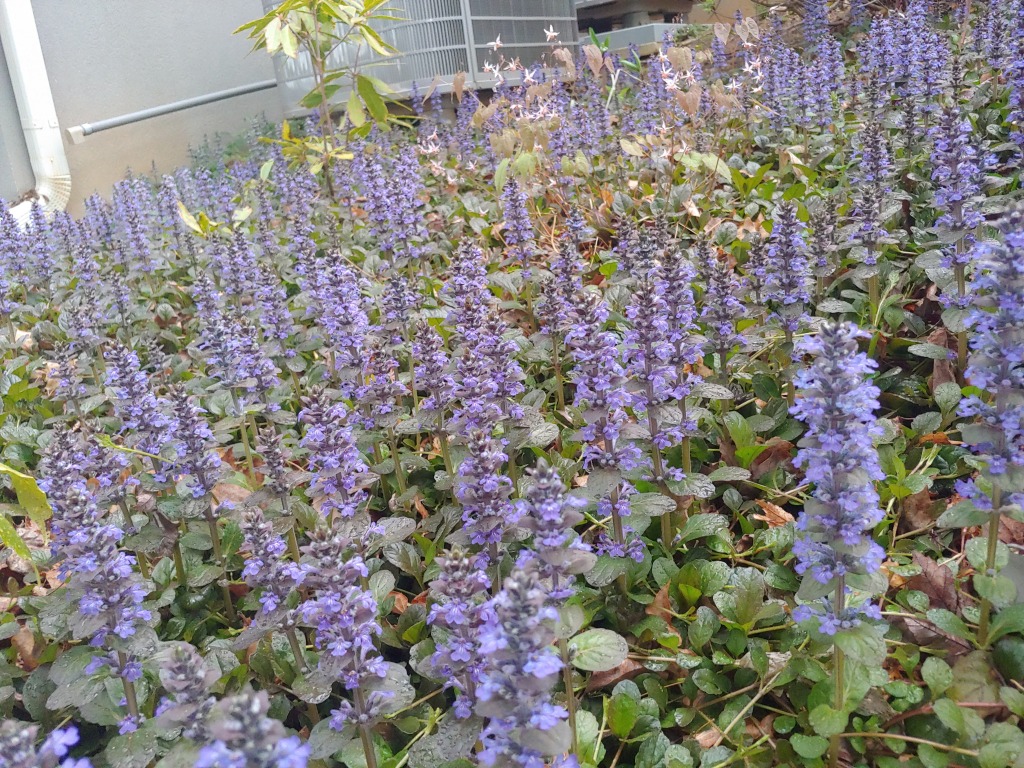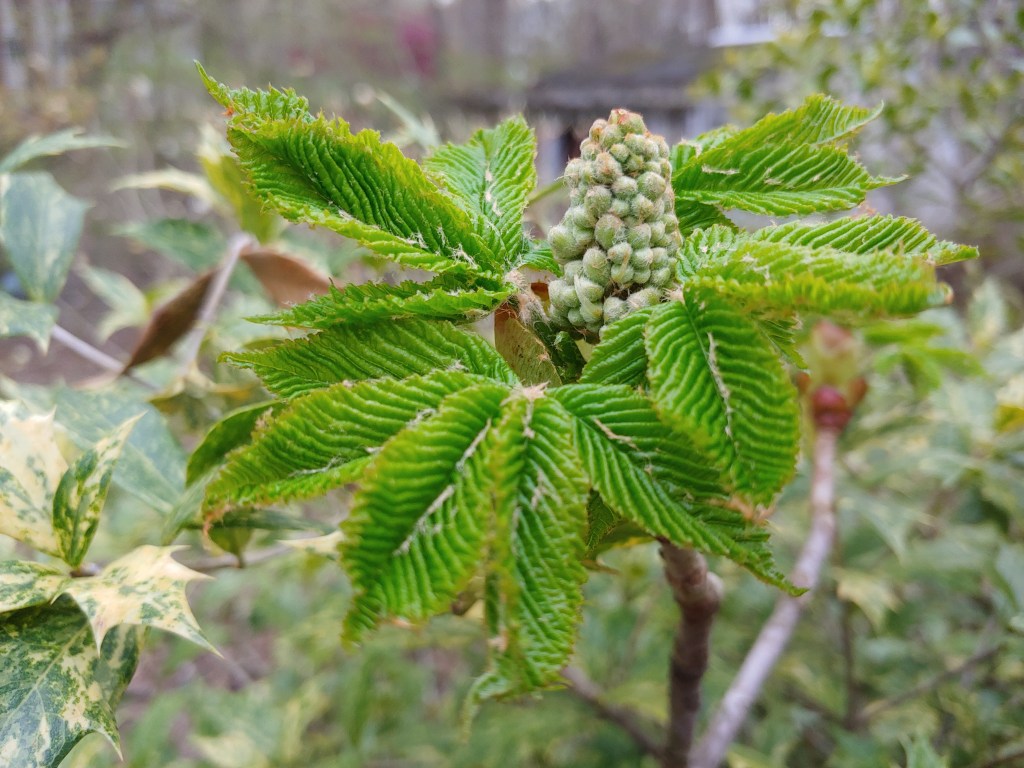At best I’m neglectful of the two small remaining parcels of lawn. My preference would be to turn every inch of the property to garden, but that’s at least a bit impractical, and mostly my wife has forbidden another inch of grass be removed. Sometimes, I must cooperate.

I don’t fertilize the lawn or garden, and while it’s evident that plants manage quite well without when planted in nutrient rich, clay soils, shallow rooted lawns do not fare so well without additional nutrition and irrigation. And, I’m okay with that. Since I also don’t use herbicides, wherever the lawn is lacking, clovers and other greens fill the gaps acceptably, and occasionally add a dash of color to the unmanicured, green carpet. I have no doubt my lawn is the worst in the neighborhood, but it doesn’t stand out enough to attract attention.

I must not speak prematurely, but a month into spring weeds in the planting beds seem to be mostly under control. Almost certainly I’ll be back in a week whining about the recent invasion, but with a little labor and a lot of planting the open spaces for weeds to invade are getting smaller. There is a place in the garden for vigorous ground covers, and this is it, though a bit of experimentation is required to be certain that aggressors do not choke out their neighbors.
I continue to be concerned by late freezes, with another expected tonight and many plants vulnerable to damage with newly emerged leaves. Flowers are not to be worried about since their loss means nothing more than wait until next year, but many early spring blooms will tolerate a high twenties, low thirties freeze (Fahrenheit). Most tender leaves are not damaged unless temperatures drop to the low twenties, so there’s no reason to be overly concerned.

I’ve said this weekly for the past couple, but perhaps this is the last freeze, and the last frost is likely to be near. I hardly worry about frost since I rarely plant tender annuals, and any hardy plant will tolerate a frost without a problem. I am ready to be rid of the cold, as I’m sure you are. Four or five days a week have been marvelous, with the other three chilly. I won’t be happy until every day is sunny and pleasant, with a day every two weeks reserved for a soaking rain, preferably overnight.
I am so upset at the mazus my landscaper planted in between my large stepping stones on the side of my house; I had no idea it would spread into the gardens where I have azaleas and into the grass. It’s now the 3rd year and I’m trying to pull it all up. I asked my lawn care guy how to get rid of it to stop it from spreading everywhere and he said he will use a weed killer that won’t kill the grass but will kill the mazus. I wish I had just put grass seed down, in between the large step stones. I hate “ground covers!! “ I’m still pulling up the pachysandra from 20 years ago that I couldn’t retain in its originally designated area. The garden centers never tell you that the ground covers spread like wildfire.
Not all ground covers spread so aggressively, but in parts of this garden they were chosen to spread rapidly, and at low cost. Mazus is a spreader that demands explanation before planting.
I had a nice large area of muzus that was beautiful then all of sudden it died off..no idea why